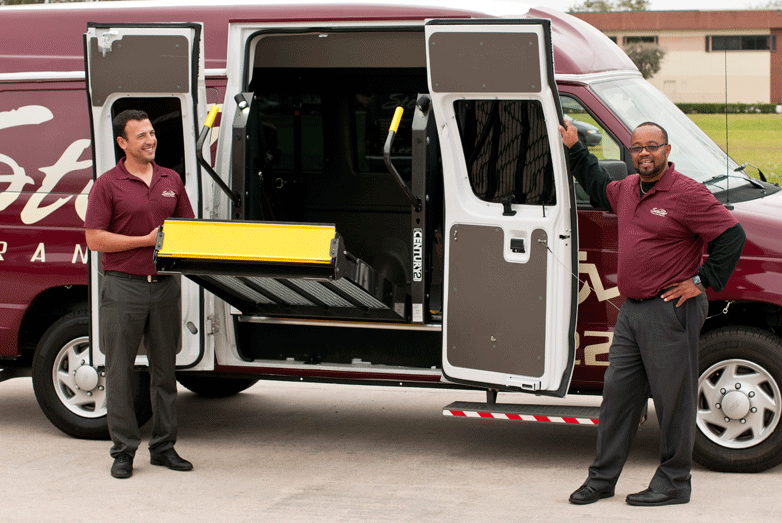Everything from wheelchair lifts to safety belt placement determines the overall safety of a wheelchair accessible van. You can’t rely on just any handicapped van to safely transport you or your loved one around town. Many vans advertised as ‘wheelchair safe’ are anything but. Look out for these safety features in order to identify if a wheelchair-accessible van is truly safe or not.
Van Wheelchair Lifts
Proper wheelchair lifts are necessary to safely get passengers into the vehicle without causing further harm or discomfort. The training, strength, experience and sensitivity of the team tasked with transferring the patient is equally important.
Safety Belt Placement
Actual placement of the safety belt will impact if a van is safe or not for wheelchair transportation. The safety belt should not gap between the belt and the passenger’s body. Otherwise, the passenger can easily slip beneath the belt in an accident and become a free flying object in the car. A belt that does not fit snug around the hips can also cut directly into a passenger’s body during a crash, causing severe harm and even death.
By law, belts need to be able to withstand a certain amount of pressure and force without breaking. Yet, improper placement can damage belts even if they meet suggested guidelines. For instance, if the belt is wrapped around the wheelchair frame and wheelchair wheel it is much more likely that the belt will break during a crash. The belt may wrap around the chair frame over and over, potentially damaging the webbing and causing failure in the instance of a crash. This will also cause the force of the crash to concentrate to one area, which increases the risk for serious injury.
OEM Seating
If a patient is able to walk or transfer into a vehicle with assistance they should be placed in the van’s OEM seat. This seat is crash tested and approved following federal safety standards. It is safer to have a patient in this seat as opposed to in in a wheelchair.
Remember, wheelchairs are not crash-tested vehicle seats. There’s no comparing how much safer it is to sit in an OEM seat as opposed to a wheelchair. If patients are capable of getting into the van without their wheelchair this seat should be utilized. The OEM seat meets federal requirements regarding everything from the headrest to the way the seat is implanted in the car.
WC-19 Wheelchair
If patients are not able to transfer into OEM seating a WC-19 wheelchair is fundamental to overall safety.
Unlike traditional chairs, a WC-19 wheelchair is manufactured as a seat to be used in a motor vehicle. As a result, it is much safer than other wheelchairs. It is made following specific guidelines to keep your loved one safe in a crash. These specifications include:
-At least 4 permanently labeled securement points that can withstand a crash up to 30 mph or 20 g impact.
-The proper set up to attach a securement strap end-fitting hook.
-Provides clear path for vehicle mounted safety restraints beside the passenger.
-Includes anchor points where one can add the option for a wheelchair anchored pelvic safety belt that can withstand up to a 30 mph crash or 20 g impact.
-An interface that can attach the pelvic belt to a vehicle-anchored shoulder belt.
This type of wheelchair is your best bet for safely riding in a wheelchair van in a chair. Just because a wheelchair is listed as WC-19 compliant and matches with the models on the official list, does not mean it is in fact built up to standards. The only way to know for certain is to order the wheelchair and specifically state that you need it to be WC-19 compliant.
The Safest Ride In Town
Don’t risk the safety of your loved one by hiring a mediocre transportation team; instead settle for nothing less than stellar. Stellar Transportation specializes in non-emergency medical transportation for wheelchair patients. We remain up to date on the latest regulations and safety features, using only newer year vehicles that are constantly checked for overall safety. As a result, you can rest assured that your loved remains safe and comfortable at all times.

